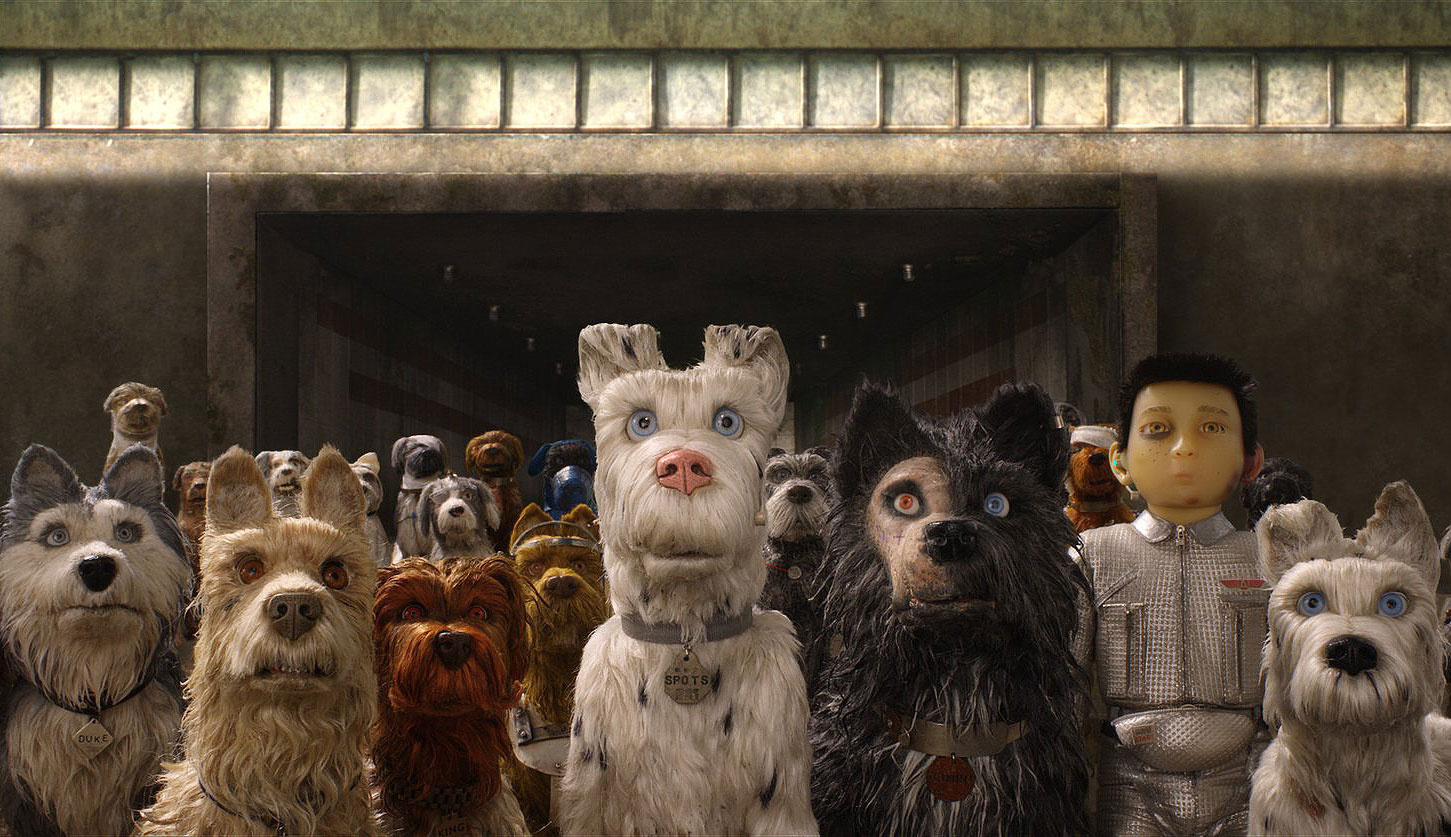
A bounding, quick-witted tale sporting the classic Anderson elements and exploring the loyalty of the people to ‘man’s best friend’. Isle Of Dogs does not disappoint. It’s a delightful addition to Wes Anderson’s repertoire, including well-known productions such as The Grand Budapest Hotel and Moonrise Kingdom.
A brief plot overview: The future. Japan. A people indoctrinated against dogs and a cruel leader who has banished them off the mainland to ‘trash island’ because they are all infected by ‘dog flu’. A young boy desperate to find his pup crash lands in trash. A friendly group of dogs with an unfriendly stray dog leader, Chief, decide to help the boy (a decision Chief does not agree with but nice Ed Norton-voiced dog, Rex, urges them to pursue).
A bizarre escapade unfolds. Chief’s true identity is revealed. Political anarchy fizzles in the state. A group of ‘pro-dog’ students stick it to the man. A battle between dogs, a battle between humans and dogs, a battle between humans, dogs, and robot dogs. A plot with layers and layers which suddenly have to match up in the final half. Less humour. More politics. Is it all an analogy? Who knows, but it’s pretty nice to watch anyway.
What I particularly loved about Isle Of Dogs was the screenplay, the colours popped, the scenes were slick, and the influence of both Hokusai and Hiroshige (two of the most famous Japanese woodblock painters) is clear in the images on screen.
With the likes of Bill Murray and Ed Norton, the film whooshes along with Anderson’s quiet humour and amusing exchanges of dialogue between the dogs.
It is, however, not as humour-full as Fantastic Mr Fox, yet it is more aesthetically pleasing (symmetrical and blossom-filled) and more interesting when viewed as a piece of art (with silhouetted scenes and enchanting painterly moments). The pace is sharp, with a Japanese-style drum beat (Taiko drumming) pumping the action along and the scene transitions musical in their rhythm.
However, Anderson’s intricate plot suffers slightly from too many levels and the film loses some of its former congruency as it moves into the second half. A canine “Stand By Me” mutates into more politics and less fun; the energy is more forced and the wit, less free-flowing.
The emotive eye which was so absorbed in the dog’s moves towards the people yet, due to the lack of translation, the audience are not as emotionally attached to the people. It is after all a story told through the eye of the dog.
Personally, I do not see the language barrier (the people in the film mainly speak Japanese which is only partly translated) as being disrespectful towards the culture, rather the language barrier enables the audience to focus on the dogs and experience the action from their point of view (the dogs speak English).
Some critics have termed the film ‘anti-Japanese’, due to this issue of language, amongst the clichés such as sushi and sumo wrestler scenes, yet although these aspects are cliché, they are also key features of Japanese culture and Anderson presents the culture with flair and respect.
Particularly influenced by the films of famous Japanese director, Akira Kurosawa, Isle Of Dogs shows, not a naïve director fueling another case of cultural appropriation, but a director eager to display the beauty of Japan and use (not abuse) elements of the country’s traditional storytelling to narrate a quirky tale of adventure. Japan is not simply a setting for an American romp, the Japanese characters are active, three of them are undeniably the film’s heroes.
Overall, the film was charmingly odd, smart in its script, and beautiful in its screenplay. The casting was perfect, with each actor/actress truly embodying their animated counterpart. The cultural appropriation is of course an issue, but the entirety of this growing debate could not fit into this short review.
Appreciate the filmmaking. Appreciate the art. Personally, I do not agree that it should be such a great issue in this particular film yet others may. Nevertheless, it is intelligent and creative filmmaking, lovingly portraying a unique group of pups. We follow the tale from the dog’s point of view. And it is a beautiful tale at that.
#Peace.Love.IsleOfDogs








